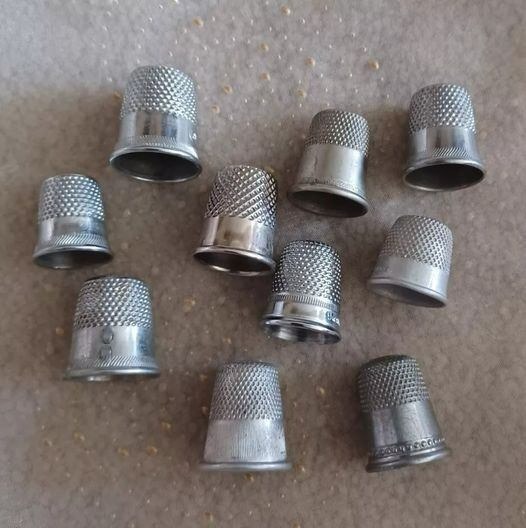ADVERTISEMENT
In terms of value, certain postcards—especially those with historical significance, rare locations, or artistic designs—can fetch high prices at auctions or in specialized collections. If you’re unsure about their worth, it’s a good idea to consult a postcard expert or visit an antique store to get a sense of their market value.
### 4. **A Box of Strange Glass Bottles**
Perhaps the most enigmatic discovery was a box filled with small glass bottles. Some were clear, others tinted with amber or green hues. Some had ornate stoppers, while others were sealed shut with wax. Each bottle was different, and they ranged in size from small vials to larger, squat jars.
#### What They Are: Apothecary Bottles and Vintage Perfume Bottles
These bottles were likely used in the early to mid-20th century for storing medicines, perfumes, or cosmetics. **Apothecary bottles** were commonly used by pharmacists to store medicinal herbs and tinctures, while **perfume bottles** were often decorative, crafted from glass and designed to showcase the perfume inside. Some of these bottles may have been part of a home apothecary set or personal care collection.
In many cases, these bottles were handmade, and their designs could vary greatly depending on the maker or the region where they were produced. Some of the more ornate bottles were likely produced as part of a larger collection, either for personal use or as a decorative item for display.
#### What to Do with Them:
If you come across old apothecary or perfume bottles, consider them as part of a vintage collection. Their value is often determined by their age, rarity, and condition. Some bottles, especially those from well-known perfume brands or those with unique designs, can be highly collectible. You can either display them on a shelf, use them for DIY projects, or consult an antique expert to determine their value.
### 5. **A Tattered Journal or Diary**
One of the most intimate items I uncovered was a leather-bound journal that had clearly seen better days. The pages were yellowed with age, and the cover was cracked, but it was still legible. Inside were handwritten notes, sketches, and memories from years gone by—my grandmother’s reflections on her life.
#### What It Is: A Personal Journal or Diary
A personal journal is one of the most precious objects you can discover in a grandparent’s home. Often, these diaries are filled with personal reflections, family history, and stories of significant life events. They provide an intimate glimpse into the thoughts and emotions of the writer, capturing moments that would otherwise be forgotten.
My grandmother’s journal revealed a snapshot of life from decades ago—her experiences, hopes, and dreams. Some of the entries were funny, while others were deeply reflective, and they offered a view of the world from her perspective.
#### What to Do with It:
A personal journal is an invaluable keepsake. It can offer a glimpse into your family’s past and provide a deeper understanding of your grandmother’s life and experiences. Preserve the journal carefully, and if possible, consider transcribing it or digitizing its contents to ensure it survives for future generations. Sharing it with other family members could spark interesting conversations about your family’s history and the world your grandmother lived in.
### Conclusion: The Hidden Treasures of Our Past
Uncovering the items I found at my grandma’s house was like embarking on a journey through time. Each object had its own story to tell, and each one provided a window into the past—a way to connect with a time and place that seemed so far removed from my own life. Whether it was a delicate fan, an old pocket watch, a collection of postcards, vintage bottles, or a personal journal, these items were tangible pieces of history, full of memories and emotions that were worth preserving.
For many people, their grandparents’ houses are a trove of hidden treasures, each object holding a secret or a story waiting to be uncovered. If you find yourself in a similar situation, take the time to appreciate the history behind these mysterious items. You may not always know exactly what they are, but with a little research and some reflection, you can uncover the rich history that lies beneath the surface of these forgotten treasures.
So, the next time you find something mysterious at your grandma’s house, don’t dismiss it as just another old relic. Take the time to investigate and discover what it truly is—and the rich history it holds. You may just find a piece of your own family’s story waiting to be told.
